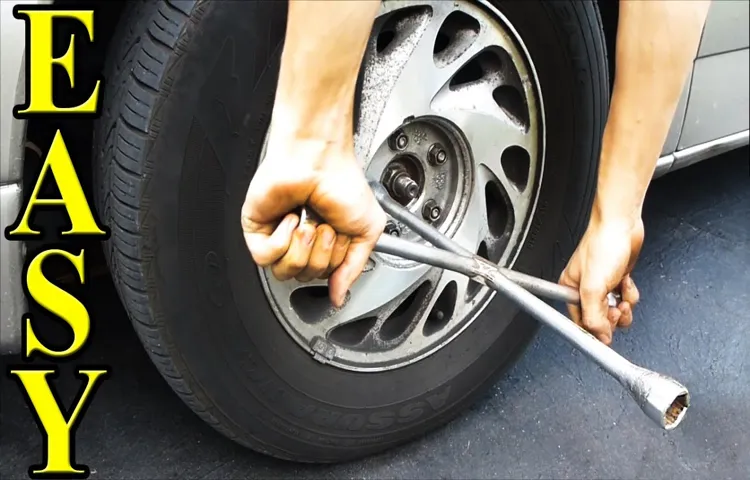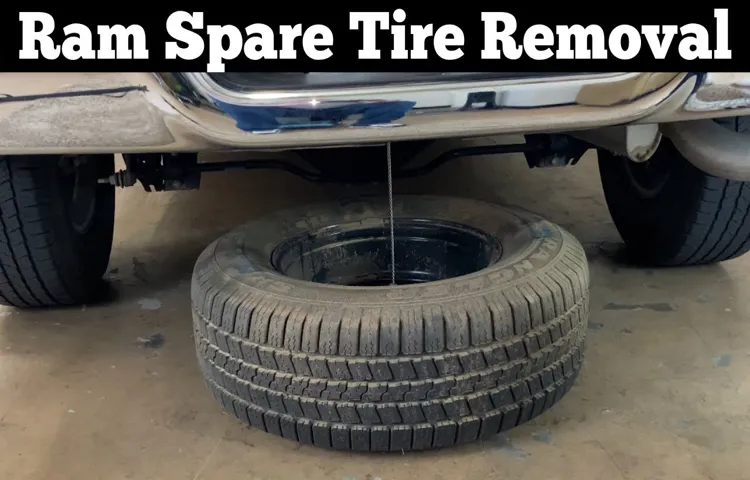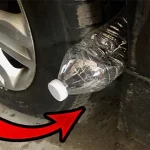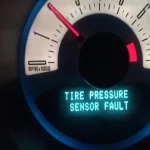Imagine you’re in a rush to get to an important event or meeting, and suddenly you hear the dreaded sound of a flat tire. You quickly pull over to switch out the damaged tire for your spare, but then you realize that you don’t have the key to unlock the spare tire lock. This scenario can be a frustrating experience, but don’t worry, you’re not alone.
Many vehicle owners have faced this issue at some point. In this blog, we’ll guide you through the steps to remove a spare tire without a key. We’ll provide you with a step-by-step process that will help you remove your spare tire quickly and efficiently, without the need for special tools or equipment.
So, let’s get started!
Table of Contents
Assess the Situation
If you find yourself in a situation where you need to get a spare tire off your car but don’t have the key, don’t panic. First, assess the situation by checking to see if there are any tools in your car that can help you. Look for a lug wrench or a pry bar that might be able to remove the tire.
If you can’t find anything, consider calling a tow truck or roadside assistance for help. It’s important not to try to force the tire off with anything that could damage the wheel or cause injury. With some patience and the right tools, you should be able to get the tire off safely and get back on the road.
Remember, safety always comes first, and it’s better to take the time to get help than to risk making the situation worse.
Check for a Locking Lug Nut
Car owners need to assess the situation when they encounter a flat tire or a punctured tire. The first step is to find a safe location to park the car and remove the tire. However, before attempting to remove the tire, check for a locking lug nut.
This type of nut has a unique shape that requires a special key to loosen them. Without the key, the tire cannot be removed, which can be frustrating and time-consuming. Many car manufacturers include the key or a replacement key set within the car’s toolkit, so it is important to check the toolkit first.
If the key is not available, the car owner can contact the manufacturer or a professional mechanic to remove the nut. It is crucial to avoid using alternative tools to remove the locking lug nut, as this can cause damage to the nut, wheel, or tire. By assessing the situation and checking for a locking lug nut before attempting to remove the tire, car owners can save time and avoid damage to their vehicle.

Inspect the Spare Tire Area
When inspecting the spare tire area of your vehicle, it’s essential to assess the situation thoroughly. You never know when you might need to rely on your spare tire, so it’s vital to ensure that it’s in good condition and easily accessible. First, check to make sure that the spare tire is in place and secure, as vibrations while driving can cause it to come loose.
Then, inspect the tire itself for any signs of wear or damage, as this could cause it to fail when needed. Additionally, check the tire pressure to ensure that it’s at the recommended level, as overinflated or underinflated tires can cause issues. By regularly assessing the spare tire area, you can have peace of mind knowing that you’re prepared for any unexpected situations on the road.
So don’t wait until it’s too late, take a few minutes and inspect your spare tire area today!
Get the Necessary Tools
If you find yourself in the unfortunate scenario of having a flat tire without the key to remove the spare, don’t worry – there are still ways to get it off. First and foremost, make sure you have all the necessary tools at hand – a lug wrench and jack are essential. If you don’t have a key, you can try using a socket set that matches the size of the locking lug nut.
Alternatively, you can use a hammer and chisel to carefully remove the lug nut – but be extra cautious, as this method can cause damage to your wheel and tire. It’s always a good idea to have a spare key on hand, and some vehicles even come with a spare key inside the storage compartment or glove box. Remember to take care when trying to remove the spare tire, and if in doubt, seek the assistance of a professional.
Gather a Lug Wrench and Jack
When it comes to changing a tire, it’s important to have the right tools on hand. One of the most important tools you’ll need is a lug wrench. This is the tool you’ll use to loosen and tighten the lug nuts on your wheels, so it’s crucial that you have one that fits properly.
You should also make sure to have a jack on hand. This is the tool you’ll use to lift the car off the ground so you can remove the old tire and replace it with a new one. When choosing a jack, it’s important to make sure it’s the right size and weight capacity for your vehicle.
Once you have both of these tools, you’ll be ready to change your tire whenever the need arises. Remember to always use caution when working on your car, and never attempt to change a tire on a busy road or without a safe place to work. With the right tools and a little bit of know-how, you’ll be back on the road in no time.
Use Pliers or a Wrench to Remove the Locking Nut (if applicable)
To remove the locking nut on your plumbing fixtures, you’ll need the right tools. Pliers or a wrench are common options, but make sure you have the right size for the specific nut you need to remove. Pliers with a long nose will give you greater control, while an adjustable wrench can fit a variety of nut sizes.
Once you have the tools, make sure the area around the locking nut is clear of any obstructions and turn off the water supply before starting your work. Take your time and apply gentle pressure to the nut until it loosens. Don’t force it, as this can cause damage to the fixture or the nut itself.
With a bit of patience and the right tools, removing the locking nut should be a straightforward process that will have your plumbing fixed in no time.
Remove the Spare Tire
If you’re stuck with a flat tire and need to replace it with the spare, you may run into a problem: the spare tire key is nowhere to be found. Don’t panic, there are a few things you can try to remove the spare tire without the key. First, check the inside of the trunk for any tools that you can use to remove the spare tire.
Look for a lug wrench, pliers, or any other tool that might help you remove the tire. If you don’t find anything useful, try using a universal lug nut remover tool. These tools are designed to fit over any lug nut and can be used to remove the spare tire.
If you don’t have access to a universal lug nut remover, you can try using a locking lug nut remover set. These sets come with multiple sizes of lug nut removers and may be able to remove the spare tire key. Remember to always exercise caution when changing a tire and, if possible, consult a professional for assistance.
Apply the Parking Brake and Use the Jack to Lift the Vehicle
Once you’ve safely parked your vehicle and applied the parking brake, it’s time to remove the spare tire. But before that, make sure to use the jack to lift the vehicle. This is a crucial step in the tire changing process to ensure that you have enough space to remove the flat tire and replace it with the spare.
Start by finding the lift point on your vehicle, usually located just behind the flat tire. Place the jack under the lift point and raise the vehicle slowly until it is high enough off the ground to allow you to remove the tire. This may require a bit of elbow grease, but it’s important to make sure the car is secure before continuing.
Once the vehicle is lifted, it’s time to remove the spare tire. Use a lug wrench to loosen the lug nuts on the flat tire before completely removing them. Now, you should be able to safely and easily take off the flat tire and install the spare one.
Always remember to use caution and follow the instructions in your vehicle’s manual to ensure a safe and successful tire change.
Remove the Lug Nuts
Once you’ve loosened the lug nuts, the next step in changing a tire is to remove the spare tire. But before you do, make sure that your vehicle is on a flat surface and that the emergency brake is engaged. To remove the spare tire, use a jack to lift the car and remove the lug nuts completely.
Carefully slide the tire off the wheel studs and set it down on the ground. It’s important to note that spare tires are often smaller and less durable than regular tires, so they should only be used temporarily. As soon as possible, take your vehicle to a tire shop to have a new tire installed.
With the spare tire removed, you can now move on to mounting the new tire. Remember to be careful when using the jack and always follow the manufacturer’s instructions to avoid any accidents or injuries.
Carefully Remove the Spare Tire from the Vehicle
To remove the spare tire from your car, you need to follow a few simple steps. Start by locating the spare tire – this is usually in the trunk, under the floorboard, or mounted to the bottom of the car. Remove the tire cover or any other attachments that may be holding the tire in place.
Then, use a lug wrench to loosen the lug nuts. Don’t completely remove them yet, but simply loosen them enough to allow the tire to be removed. Next, use a car jack to lift the car up so that the flat tire is off the ground.
Carefully remove the lug nuts and set them aside, then remove the flat tire from the wheel hub. Finally, replace the flat tire with the spare. Remember to tighten the lug nuts by hand as tightly as you can before lowering the car back down to the ground.
Check the tire pressure of the spare before driving on it, and get your flat tire repaired or replaced as soon as possible. With these simple steps, you can remove the spare tire from your car and get back on the road safely.
Replace the Tire
Changing a flat tire can be a daunting task, especially if you don’t have the key to access the spare tire. The good news is that there are alternative methods you can use to get that tire off. One of the easiest ways is to check if your vehicle has a locking wheel nut remover tool.
It usually comes with the car, and it’s designed to remove lug nuts that secure your wheels into place. If you don’t have it, you can use an extension bar with a socket attachment to loosen the lug nuts. Be sure to turn the lug nuts counterclockwise to remove them.
Once you have them off, grab the tire from the bottom and pull it towards you. If it’s difficult to remove, gently hit the sidewall of the tire with a rubber mallet to loosen it from the wheel hub. With a little patience and effort, you should be able to replace the tire and get back on the road soon.
Remember, always drive carefully and take precautions when changing a flat tire on the road.
Securely Attach the Lug Nuts
When it comes to changing a tire, securely attaching the lug nuts is an essential step that shouldn’t be overlooked. This is because the lug nuts play a major role in keeping the tire in place while driving, and if they are not tightened properly, it can lead to serious accidents. To replace the tire, start by placing the spare tire onto the wheel base and lining up the lug nut holes.
Next, screw on the lug nuts by hand until they are snug. Once all of the lug nuts are hand tightened, you can use a lug wrench to further tighten them until they are completely secure. A good way to ensure that the lug nuts are tightened evenly is to tighten them in a star pattern.
This means tightening the lug nut at 12 o’clock, then moving to the one at 6 o’clock, then to the one at 3 o’clock, and so on until all of the lug nuts are securely fastened. Remember, it’s important to double-check that all of the lug nuts are tightened properly before hitting the road. A quick tug on each lug wrench is a good way to test them out.
So, don’t risk your safety by neglecting this crucial part of changing a tire. With these steps, you can stay safe and avoid any unexpected surprises while driving.
Lower the Vehicle and Check the Tire Pressure
When it comes to taking care of your vehicle, one of the most important things you can do is ensure that the tires are in good condition. If you’ve noticed that one of your tires is flat or damaged, it’s important to replace it right away. To do so, you’ll need to start by lowering the vehicle and checking the tire pressure.
Once you have the vehicle lowered to the ground, use a tire gauge to check the pressure in the remaining tires. If they are all at the recommended level, it’s safe to replace the damaged tire. However, if you notice that the pressure in the remaining tires is also low, you may want to consider filling them up before installing the new tire.
When you’re ready to replace the tire, be sure to choose one that is the same size as the others on the vehicle and that has the same load capacity. By taking the time to make sure your tires are in good condition, you can help keep yourself safe on the road and avoid costly repairs in the future.
Conclusion: Always Be Prepared for Emergencies
In conclusion, removing a spare tire without its key may seem like a daunting task, but with the right tools and a bit of creativity, it can be done. Just remember, when life doesn’t give you a spare key, make your own key with resourcefulness and determination. And who knows, you may just discover a hidden talent for lock picking and become the next Houdini of auto repair.
“
FAQs
What should you do if you lost the key to unlock your spare tire?
You can take your car to a local mechanic or dealership to have the key replaced or buy a new set of keys yourself.
Is it possible to remove a spare tire without the key?
Yes, you can remove the spare tire using a lug wrench or a socket wrench once you locate the release mechanism.
How do you locate the release mechanism to remove the spare tire?
The release mechanism may be under the floor mat or the trunk lining. If you’re unsure, check the owner’s manual or look up the make and model online.
Is it safe to drive with a spare tire if you can’t remove it due to a missing key?
It is not recommended to drive with a spare tire that’s locked in place, as it can cause damage to the tire and potentially harm other parts of the vehicle.
Can you use a lock picking tool or method to remove the spare tire lock?
It is not recommended to use a lock picking tool or method, as it can damage the lock and potentially harm other parts of the vehicle. It’s best to get a replacement key or take the car to a professional.
What are some common reasons for losing a spare tire key?
Losing a spare tire key is common, especially if the car is secondhand or if the keys were never passed on from the previous owner. Other reasons include misplacing the key or theft.
How can you prevent losing the spare tire key in the future?
You can prevent losing the spare tire key by keeping it in a secure location, such as a safe or locked storage compartment in the car. It’s also a good idea to make a duplicate copy and keep it in a separate location.



